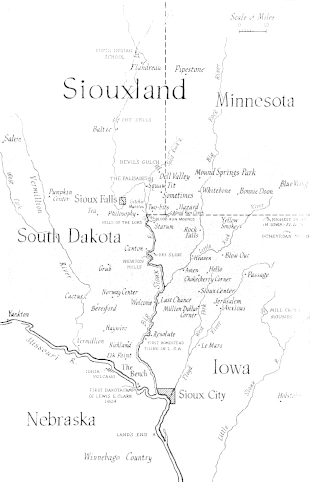43°00′N 96°24′W / 43.0°N 96.4°W

Siouxland is a vernacular region that encompasses the entire Big Sioux River drainage basin in the U.S. states of South Dakota, Minnesota, Nebraska and Iowa.[1] The demonym for a resident of Siouxland is Siouxlander.
A "vernacular region" is a distinctive area where the inhabitants collectively consider themselves interconnected by a shared history, mutual interests, and a common identity. Such regions are "intellectual inventions" and a form of shorthand to identify things, people, and places. Vernacular regions reflect a "sense of place," but rarely coincide with established jurisdictional borders.[1]
The lower Big Sioux River drainage basin stretches from Sioux City, Iowa, to Sioux Falls, South Dakota, an area that includes much of northwestern Iowa, the northeast corner of Nebraska, the southeast corner of South Dakota, and the extreme southwest corner of Minnesota.
The term "Siouxland" was coined by author Frederick Manfred in 1946. Manfred was born in Doon, Iowa, a small town in Lyon County.